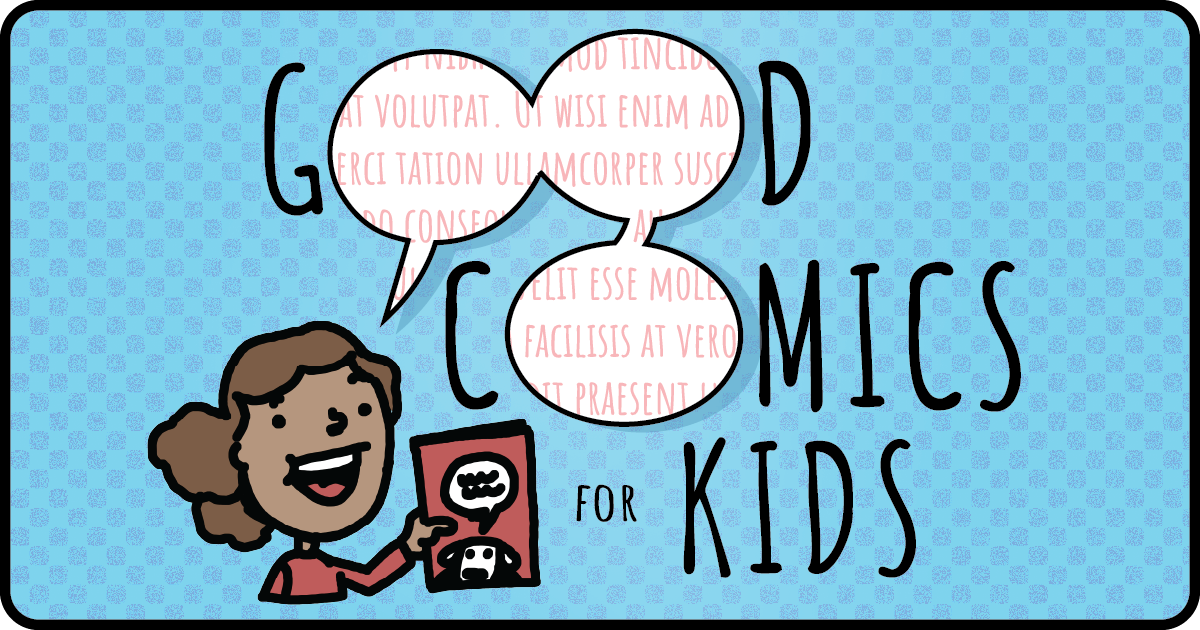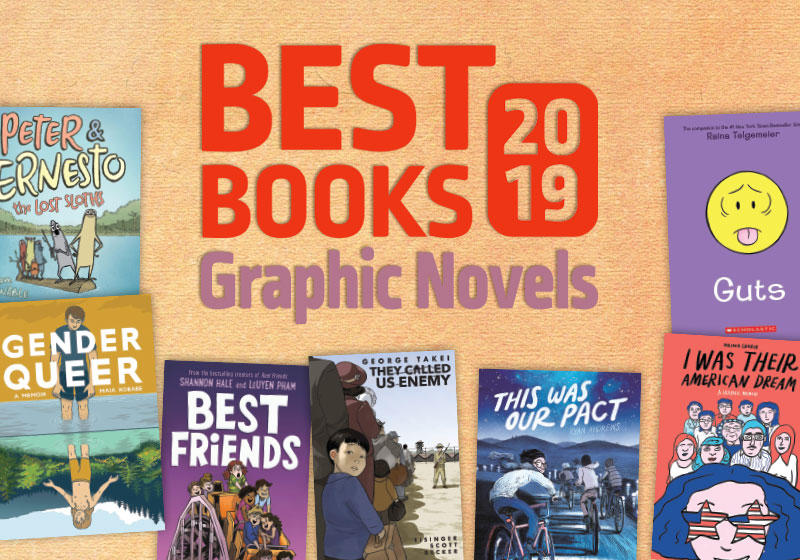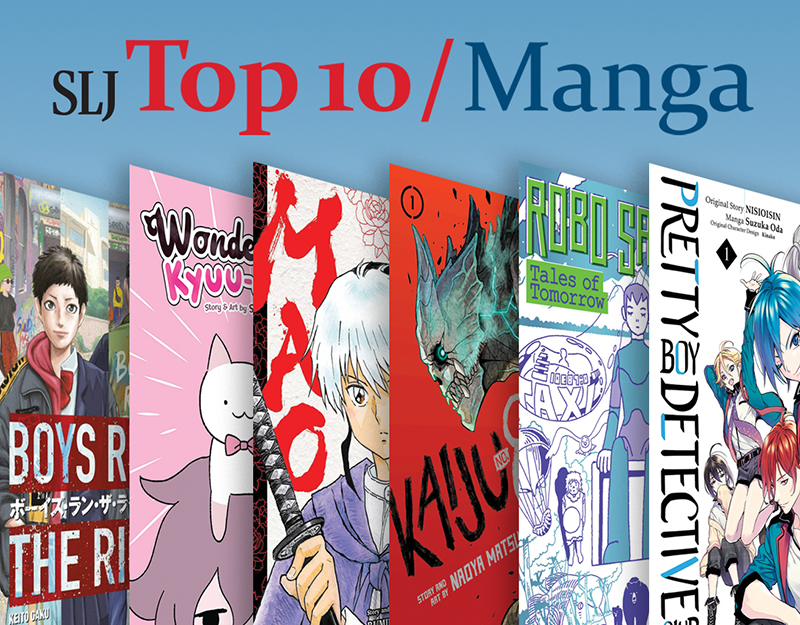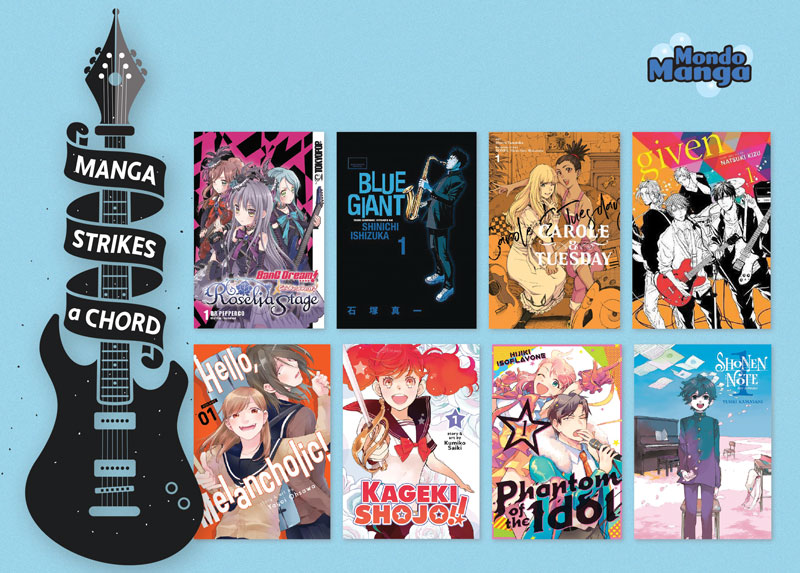
Interview: Brenden Fletcher on ‘Gotham Academy’
 Gotham Academy is a Bat-book with a difference: It’s a supernatural mystery series with an ensemble cast, set in a boarding school that just happens to be in Gotham City. The story is self-contained, although there are some characters who will be familiar to longtime Batman fans. The first volume of the series collects the first six issues of the comic, which is a complete story—more or less, as there are still many mysteries to be unraveled. Lori reviewed it here, and we have a preview up of the ninth issue as well.
Gotham Academy is a Bat-book with a difference: It’s a supernatural mystery series with an ensemble cast, set in a boarding school that just happens to be in Gotham City. The story is self-contained, although there are some characters who will be familiar to longtime Batman fans. The first volume of the series collects the first six issues of the comic, which is a complete story—more or less, as there are still many mysteries to be unraveled. Lori reviewed it here, and we have a preview up of the ninth issue as well.
Brenden Fletcher is co-writing Gotham Academy along with Becky Cloonan, and the lead artist is Karl Kerschl. We talked to Brenden about his vision for the series and how the team puts it together.
ADVERTISEMENT
ADVERTISEMENT
Gotham Academy is a Batman book without much Batman. In fact, it’s really different from all the other Batman books. It’s not a superhero story in the traditional sense. Why did you decide to move so far from the original concept?
We are writing it for people like my eight-year-old niece who don’t have a history of reading Batman comics. That’s who this is for.
DC publishes so many great Batman books every month. There is 75 years worth of stuff. I would love to tell a straightforward Batman story, but we have so many people doing it now there was no point in being just another voice doing the same thing. We saw that there wasn’t really a book for younger people, or the kind of book that could read by younger people but also enjoyed by adults, so we put our heads together and came up with this. This is the sort of book Becky always wanted to do for DC anyway, and when the group editor, Mark Doyle, gave her a call to ask if she wanted to pitch anything, this was in the forefront of her mind. She brought Karl and I on, and we put our heads together and came up with this group of kids and this clean setup for the story that would allow anyone to jump into the Batman universe without having to know this grand history of the Dark Knight.
That is not to say it is not connected to the history. It is. If you have been watching the Batman cartoons or the films or even the Batman ’66 TV show with Adam West, there are a lot of touchstones you will recognize, but our main characters and their stories, none of that is dependent on knowing that Batman history. All you have to know is this is Gotham City and he’s out there running around fighting with villains and throwing them in jail.
 Why did you choose to have a teenage girl as the lead character, and how did she develop and change as you worked out the story? What makes Olive an interesting character?
Why did you choose to have a teenage girl as the lead character, and how did she develop and change as you worked out the story? What makes Olive an interesting character?
Olive kind of appeared fully formed for us. Karl Kerschl and I have known each other for 30 years—we have been making comics since we were kids—and he and I always gravitate to female protagonists, so this is nothing new for me. This is the voice I am comfortable with.
There wasn’t a discussion of what gender should our protagonist be. We started talking about the story, but the story has its origin in thinking about the building itself, the set of buildings that make up Gotham Academy and how the academy ties into Batman lore and Gotham City, and we very quickly realized that the story we wanted to tell was also going to be attached to an individual, and it felt right that it would be this young lady that became Olive Silverlock.
The toughest thing we had to decide was her name. We had the name “Olive” right away, but “Silverlock” was hard to come to. She has white hair, but the hair color was determined by Karl separately from the name, which was determined by Becky and I. It just seemed like fate at that point. We couldn’t change it. Clearly this was meant to be.
 I want to come back to your point about the setting. Why did you choose to set it in a boarding school? What does that let you do in the story, and what does it make more difficult in terms of moving the story along?
I want to come back to your point about the setting. Why did you choose to set it in a boarding school? What does that let you do in the story, and what does it make more difficult in terms of moving the story along?
The most challenging thing about writing a boarding school story was feeling confident that we were attacking the details in an accurate fashion. We are pulling from decades of other boarding school stories, but we didn’t want to crib other people’s ideas, so we did a lot of research. I watched documentaries, and I also did a lot of research on Philips Academy Andover, which sort of forms the basis of what Gotham Academy became. We also had Ming Doyle, who is a writer and illustrator at DC, who attended a boarding school and was able to share some of the details and help us craft the way Gotham Academy would be.
As to why that might be a great place to set this story, for me it’s similar to what my Batgirl team did: We moved Batgirl out of central Gotham in order to focus on her as a character, put her in a new borough of Gotham City called Burnside that we created, and we were able to focus on who she was. This is a similar thing. It is in Gotham City, but slightly removed. You don’t have the Joker and Two-Face and the Penguin running around campus every day. These guys can turn up, but there is also a level of perceived protection for these kids that they can grow up here and have their own space to solve mysteries where you are not going to get a lot of Batman and Robin horning on in their mystery-solving action. It feels to me like it gives these young people a space of their own, gives them their own mysteries to solve. They are attached to Batman and the Batman mythos, but they feel like they are Olive’s and Coltons and Pommelin’s mysteries. I think it makes the book stand apart from the rest of the bat books.
Will Olive continue to be the lead character?
We are really focused on telling Olive’s story. Moving forward into 2016, we will see more issues like issue 7, where Olive doesn’t appear and there’s an adventure with Maps and Damien Wayne, but the main story is most certainly Olive’s narrative, and in that way I guess she is our Harry Potter. Because this is a monthly comic and it will keep going hopefully forever, we can shift the focus around, but that main narrative thread will always come around to Olive and the mystery of who she is, who her family is, how they are connected to Gotham and the academy, and how it all comes back to Batman. It is a Batman family book, and at the end of the day all roads must lead back to Batman.
 And you have some Batman Easter eggs in there for longtime readers and watchers of the 1960s TV show?
And you have some Batman Easter eggs in there for longtime readers and watchers of the 1960s TV show?
We have the Bookworm as our librarian, who is famously portrayed by Roddy McDowell in the ’66 series, and Aunt Harriet [who appeared in both the comics and the TV show], who is the matron of the girls dorm and also like to help out in the cafeteria and detention. We might have some more Batman ’66 surprises coming along the way
[The creative team] is still watching the Batman animated series and the Justice League animated series. They are great depictions of the Batman universe and they are one of the biggest influences for us and we pull a lot from them. You will see even in Karl’s depiction of these characters—they harken back to the cartoons more than the mainline DC comic books that have been going for the last couple of decades. We are really inspired by the animated take on Batman. When you see Batman and Batman stuff in particular in Gotham Academy, it should feel like it popped out of that animated series.
Who do you think of as the audience for this book, in terms of age, gender, and what fandoms they might already be a part of?
Gotham Academy was at [the American Library Association midsummer meeting], where we learned there was no such thing as “all ages.” Honestly, I am writing my part of Gotham Academy for myself. This is the kind of book I want to enjoy, but at the same time I’m very conscious that my eight-year-old niece needs a book like this. If I have to drill down and say it has to be shelved in a certain place or recommended to a specific demographic, I would say young people eight to 14. My niece is eight and she loves Gotham Academy. I feel very proud when I give her a book and she devours it and wants more. I had her in mind when I put it together. I need to know this is something she is really going to enjoy. It feels really validating. I know that it’s not inappropriate for that age range, we are not putting anything in there that would be inappropriate at all, but also I know this story plays for somebody at that age. It’s really been stirring a chord with her.
ADVERTISEMENT
ADVERTISEMENT
 I don’t know there is a specific gender this would appeal to. We have a cast that is equal parts male and female. The main protagonists are young ladies, but there are plenty of male characters. When I grew up—even to this day my favorite comic is Nausicaa of the Valley of the Wind. Miyazaki is probably my greatest influence in storytelling.
I don’t know there is a specific gender this would appeal to. We have a cast that is equal parts male and female. The main protagonists are young ladies, but there are plenty of male characters. When I grew up—even to this day my favorite comic is Nausicaa of the Valley of the Wind. Miyazaki is probably my greatest influence in storytelling.
Karl was also super influenced by Miyazaki. We are all conscious of the manga scene, and we all consume a lot of manga, we all watch a lot of anime. This isn’t to say that Gotham Academy is Americanized manga. It still fits within the DC universe. Karl’s style is a fusion of traditional superhero comic style and a manga influence, and the way the colors are handled is a traditional sort of animated style where the background is painted separately from the characters. We have young lady, Michele Assarasakron, in British Columbia who fully paints the backgrounds, and then the characters are colored separately on another layer just as in animation here in Montreal.
How do you keep the kids edgy yet within the bounds of a 12+ book?
I think it’s just being conscious of who these people are. It’s not putting them in that box of “Oh, this young lady is only 13 and she can only have these feelings because she is a child.” These are well rounded people who have already at this age incredible life experiences, and we are trying to be very true to that. Olive, as we hint in the first volume, has gone through some kind of traumatic things for a a young lady of only 14, and some of these things involve a history with Batman, and it’s colored her take on Batman. In a way, she sees him negatively. This is not something your average 14-year-old goes through. There’s a depth and a bit of sadness to that experience. It’s something we are trying to be very honest about. We are not trying to sugar coat it. We are not going into the kind of detail we would go into in a book for 25- or 30-year-olds, but we are handling it in a respectful way without bogging it down in details that are inappropriate for the age range.
It all just comes down to reflecting the truth to the characters, respecting the characters and respecting the audience.
I feel like it’s kind of unique for a protagonist in a Bat book, not caring for the star. You could argue that Batman is DC’s greatest star at this point, and it’s an interesting angle to play. It’s fun. We are having a lot of fun, and we are hoping people will feel it is original and entertaining and offers some depth and thoughtfulness.
Filed under: Interviews
About Brigid Alverson
Brigid Alverson, the editor of the Good Comics for Kids blog, has been reading comics since she was 4. She has an MFA in printmaking and has worked as a book editor, a newspaper reporter, and assistant to the mayor of a small city. In addition to editing GC4K, she is a regular columnist for SLJ, a contributing editor at ICv2, an editor at Smash Pages, and a writer for Publishers Weekly. Brigid is married to a physicist and has two daughters. She was a judge for the 2012 Eisner Awards.
ADVERTISEMENT
ADVERTISEMENT
SLJ Blog Network
Name That LEGO Book Cover! (#53)
Cover Reveal and Q&A: The One and Only Googoosh with Azadeh Westergaard
Fighting Public School Book Bans with the Civil Rights Act
Take Five: Middle Grade Anthologies and Short Story Collections
ADVERTISEMENT







